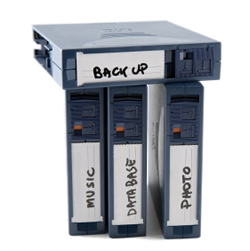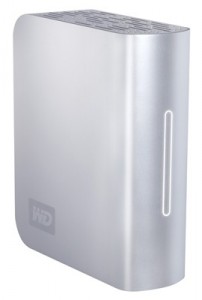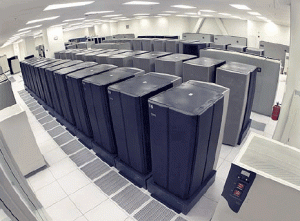Note: This article was originally published on a corporate blog that has since been taken down. With that company’s permission, I’m republishing this series here. Some links in the text have been updated. This article was originally published July 6, 2008.
 We all have one of two “backup stories.” Hopefully, you saved the day (and your own bacon) by recovering a file from a backup created by a long-forgotten backup process. Otherwise… Well… Obviously there are a lot of really bad situations that can come from lost data.
We all have one of two “backup stories.” Hopefully, you saved the day (and your own bacon) by recovering a file from a backup created by a long-forgotten backup process. Otherwise… Well… Obviously there are a lot of really bad situations that can come from lost data.
This article is the first of three four on the subject. This edition will focus on the considerations needed to form a complete backup strategy. In those that will follow, we’ll review the hardware, software, and online services that can be used to implement a complete strategy.
As our lives grow increasingly more digital, the problem of backing up our vast data will become more and more critical. When is the last time you had physical negatives for your photos? How much of your music or video collection exists only on your hard drive? Do you capture and store digital video of one-time-only events with family and friends? Are your financial files stored on your system? What would happen to this data if you had a fatal, irrecoverable hard drive crash right now?
 To get over this problem, consumers have started using various levels of backup solutions. From the simple (manually copying files to another drive or burning them to a CD/DVD) to the advanced (automatically keeping multiple copies of your data encrypted on various systems around the world), the possibilities are endless. The hard part is choosing one that meets your particular needs, including price point. For those of us in tech-centric day jobs, this is all taken care of by people who are paid to think of the best solution – and who are held accountable if they make the wrong choice. Most of us don’t have such a resource in our home environment. This article seeks to solve that.
To get over this problem, consumers have started using various levels of backup solutions. From the simple (manually copying files to another drive or burning them to a CD/DVD) to the advanced (automatically keeping multiple copies of your data encrypted on various systems around the world), the possibilities are endless. The hard part is choosing one that meets your particular needs, including price point. For those of us in tech-centric day jobs, this is all taken care of by people who are paid to think of the best solution – and who are held accountable if they make the wrong choice. Most of us don’t have such a resource in our home environment. This article seeks to solve that.
First, let’s talk about the two main types of backup: Local and Remote.
Local backups consist of any duplicate copies of your data that reside in the same place as the primary copy. Some examples include directly-connected USB or Firewire drives, burned CD/DVD copies, or home-based Network Attached Storage (NAS) devices.
These are important because they solve what I call the “oh shoot, I just deleted something important” problem. Local storage is cheap, fast, reliable, and close at hand. You can retrieve your precious lost data within minutes, and you aren’t far from the fridge, so pouring your congratulatory beverage probably takes longer than the actual retrieval.
Remote storage is any method that houses a copy of your data someplace that is not near the primary copy. Examples of remote storage include USB or Firewire drives kept at a friend’s house or in a safe deposit box, CD/DVD or tape media that’s sent to storage facilities via postal mail or courier, or any of the countless internet-based storage services currently available.
This part of the overall solution is also important because it solves the “oh *%#@*$! the house burned down” problem. Remote storage can be expensive, is only as fast as your car, delivery service, or ISP’s network, and generally relies on the performance of others to get your data back.
So, which should you choose – Local or Remote? Both.
By combining the strong points of both local and remote backup strategies, you can optimize your resilience to lost data due to hardware failure, human error, theft, viruses or other malware, or physical catastrophe from fire, flood, or other weather. I’ll lay out my recommended strategy here. It’s the result of experience backing up data in both home and enterprise environments, ranging from a few megabytes to several terabytes. There is no one-size-fits-all solution, but I feel this strategy will provide an appropriate level of protection to the overwhelming number of home users, without undue cost.
Since local backups are cheap and fast, I recommend using LOTS of them, using software that keeps lots and lots of versions of all of your data. Remember – backing up hourly is great until you don’t realize that you deleted that critical file until 90 minutes after the fact! This requires some degree of software, such as Apple’s Time Machine, Windows XP’s Shadow Copy, Windows Vista’s “Previous Versions”, or one of many rsync-based solutions for Linux. Again, we’ll get more into the details of these and other software titles in the next article.
I’ll use Time Machine to illustrate how local backups can be used, but other backup titles provide similar functionality. Each and every hour that you use your computer, Time Machine backs up any file on your entire system that has changed since it last run, and keeps those hourly backups for 24 hours. After that, it will keep one backup per day for the past month. Even beyond that, it will keep one backup per week for as long as your hard drive has space. Right now, I still have the ability to quickly and easily recover files that I may have deleted as long ago as November 2007 – eight-months ago! If I’m ever concerned about losing old backups, I can always buy more storage, migrate my backups, and just keep on trucking.
 Remote backups, on the other hand, ensure that you’ll be able to recover from catastrophic loss of your data. Arguably, that kind of event is just the kind in which you don’t want to deal with losing your data as well as your home, belongings, or worse. Getting copies of your files OUT of your home should be a major priority as well. For this, I personally use an online storage service called Jungle Disk. Again, there are many similar offerings, and each has it’s own benefits and drawbacks. More on that next time. However, with Jungle Disk, I am able to encrypt the files that I select, send them to a cluster of storage that is far away from my home, and keep that offsite archive current on a schedule that I specify. With this particular service, I only pay for the storage I use, rather than for storage I’m not using. In my case, it’s just a few dollars per month to back up the documents and photos (over 10,000 of them) from two systems.
Remote backups, on the other hand, ensure that you’ll be able to recover from catastrophic loss of your data. Arguably, that kind of event is just the kind in which you don’t want to deal with losing your data as well as your home, belongings, or worse. Getting copies of your files OUT of your home should be a major priority as well. For this, I personally use an online storage service called Jungle Disk. Again, there are many similar offerings, and each has it’s own benefits and drawbacks. More on that next time. However, with Jungle Disk, I am able to encrypt the files that I select, send them to a cluster of storage that is far away from my home, and keep that offsite archive current on a schedule that I specify. With this particular service, I only pay for the storage I use, rather than for storage I’m not using. In my case, it’s just a few dollars per month to back up the documents and photos (over 10,000 of them) from two systems.
When using a remote storage service, don’t forget to keep copies of your access credentials, such as usernames and passwords, access keys, and encryption keys, somewhere other than via your computer or e-mail! I’ve put the data onto paper, then stored that in a safe deposit box with other sensitive papers and belongings.
So, in closing, both local and remote storage have their benefits, and by creating a backup strategy that leverages the strong points of each, you can quickly and easily start backing up all of your most precious data securely, providing piece of mind, and avoiding the panic and frustration that sets in when you realize you hit the ‘delete’ button a little too aggressively last week… Next time, we’ll review a number of the solutions and services that you can use to best implement a local backup scheme. Part three will discuss some of the currently available options for remote backup. The best part about planning a strategy and executing it is that after some initial work, everything is on autopilot. In reading this article, you’re already more than a third of the way to a full and complete backup strategy for all of your critical data!
Please keep reading this series!
- Part Two: Local Data Backup – Hardware Selection
- Part Three: Local Data Backup – Software Selection
- Part Four: Remote Data Backup – The Final Component